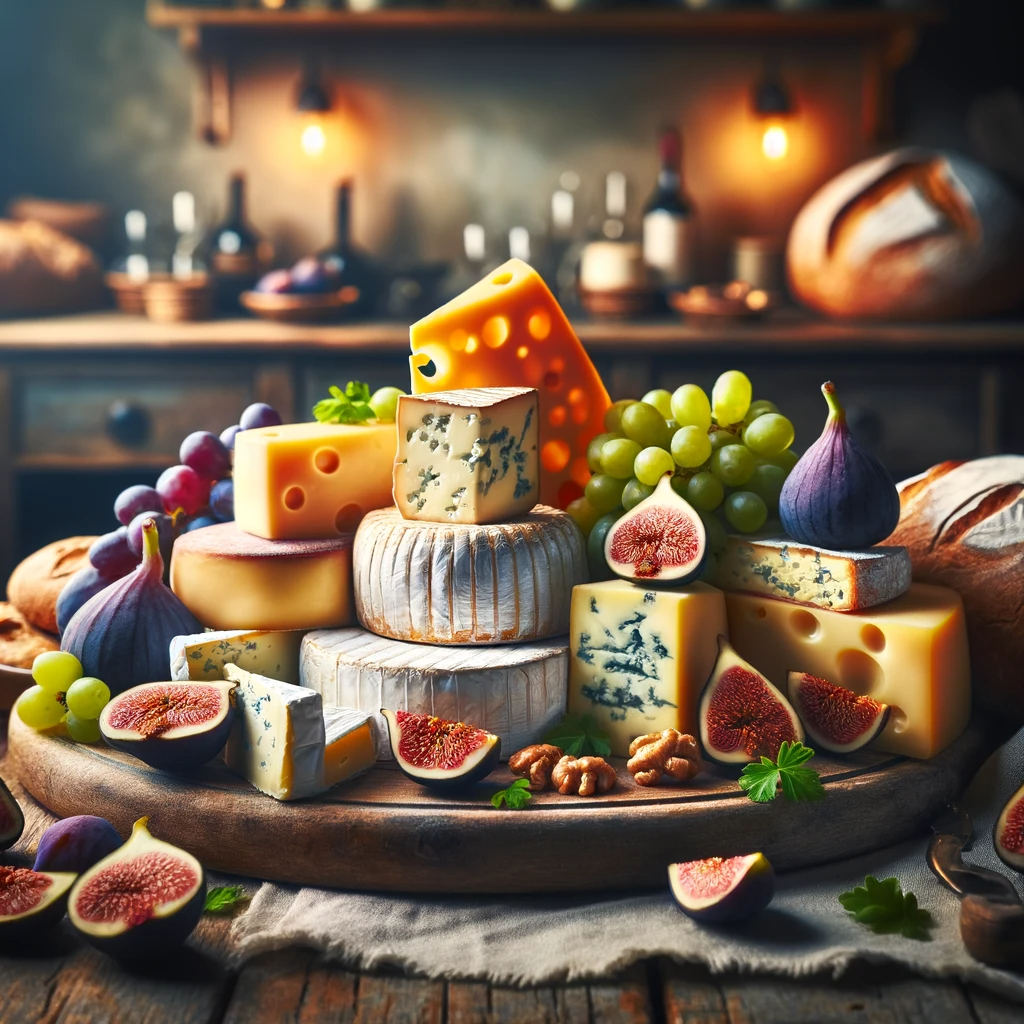Cheese tasting is a delightful experience that allows you to savor the rich flavors and textures of this beloved dairy product. Whether you’re a cheese connoisseur or a novice enthusiast, understanding the art of cheese tasting can elevate your culinary journey. In this article, we will explore the intricacies of cheese tasting, focusing on assessing ingredients and quality.
The Basics of Cheese Tasting
Cheese tasting is much like wine tasting, with its own set of guidelines and techniques. To truly appreciate the nuances of cheese, you need to pay attention to the following aspects:
1. Appearance
- Color: Examine the color of the cheese. It can vary widely, from pale whites to deep amber hues, depending on the type of cheese and its aging process.
- Texture: Observe the texture of the cheese’s surface. Is it smooth, rough, or cracked? A cheese’s texture can give you insights into its age and quality.
- Consistency: Squeeze the cheese gently to assess its consistency. Is it soft, semi-soft, firm, or hard? The consistency affects the mouthfeel and flavor.
2. Aroma
- Intensity: Bring the cheese close to your nose and take a deep sniff. Is the aroma mild, moderate, or strong? A cheese’s aroma can hint at its flavor profile.
- Complexity: Try to identify the different scents in the cheese. A complex aroma can indicate a well-aged and matured cheese.
3. Taste
- Flavor Profile: Take a small bite of the cheese and let it melt on your tongue. Identify the primary flavor notes – is it creamy, nutty, sweet, tangy, or earthy?
- Balance: Assess the balance between flavors. A good cheese should have a harmonious combination of tastes.
- Aftertaste: Pay attention to the lingering taste after you’ve swallowed. Is it pleasant, or does it leave a bitter or unpleasant aftertaste?
4. Texture
- Mouthfeel: Note the texture as you chew. Is it smooth, grainy, crumbly, or creamy? The texture plays a vital role in the overall cheese experience.
- Consistency: Is the cheese consistent in texture throughout, or does it change as you chew? A cheese should have a pleasant, consistent texture.
Assessing Ingredients and Quality
Now that we’ve covered the basic elements of cheese tasting, let’s delve into how to assess the ingredients and quality of the cheese.
1. Milk Source
- Cow, Goat, or Sheep: Different milk sources impart distinct flavors to the cheese. Cow’s milk cheese tends to be mild and creamy, while goat’s milk cheese is often tangy and sharp. Sheep’s milk cheese can be rich and complex.
- Organic and Grass-Fed: High-quality cheeses often come from organic or grass-fed animals, resulting in superior taste and texture.
2. Cheese Age
- Fresh vs. Aged: Cheese can range from fresh (young) to aged (old). Fresh cheeses are mild and creamy, while aged cheeses develop intense flavors and textures over time.
- Cheese Aging Conditions: Cheese aging conditions, such as temperature and humidity, greatly influence its quality. Proper aging is crucial for developing a cheese’s unique characteristics.
3. Cheese Ingredients
- Additives: Check the cheese’s ingredients for any additives or preservatives. High-quality cheese should contain minimal additives to maintain its purity.
- Cultures and Enzymes: The specific cultures and enzymes used during cheese production can significantly impact its flavor and texture.
4. Cheese Rind
- Natural vs. Artificial Rind: Examine the cheese rind. Natural rinds often indicate traditional cheese-making processes, while artificial rinds may suggest mass production. Natural rinds can contribute to a more authentic taste.
- Mold and Bacterial Growth: Mold and bacterial growth on the rind can be desirable for some cheeses, adding complexity to their flavor. However, excessive mold may indicate improper storage.
5. Cheese Region
- Geographical Influence: The region where cheese is produced can have a profound impact on its characteristics. Different regions have unique cheese-making traditions and terroirs, leading to diverse flavors and styles.
Conclusion
Cheese tasting is a delightful art that invites you to explore the world of flavors and textures that cheese has to offer. By paying attention to the appearance, aroma, taste, and texture, you can assess a cheese’s quality and ingredients. Understanding the source of milk, aging process, ingredients, rind, and regional influences will enhance your appreciation of cheese. So, next time you indulge in a cheese tasting, savor every moment and let your palate be your guide to the exquisite world of cheese.
